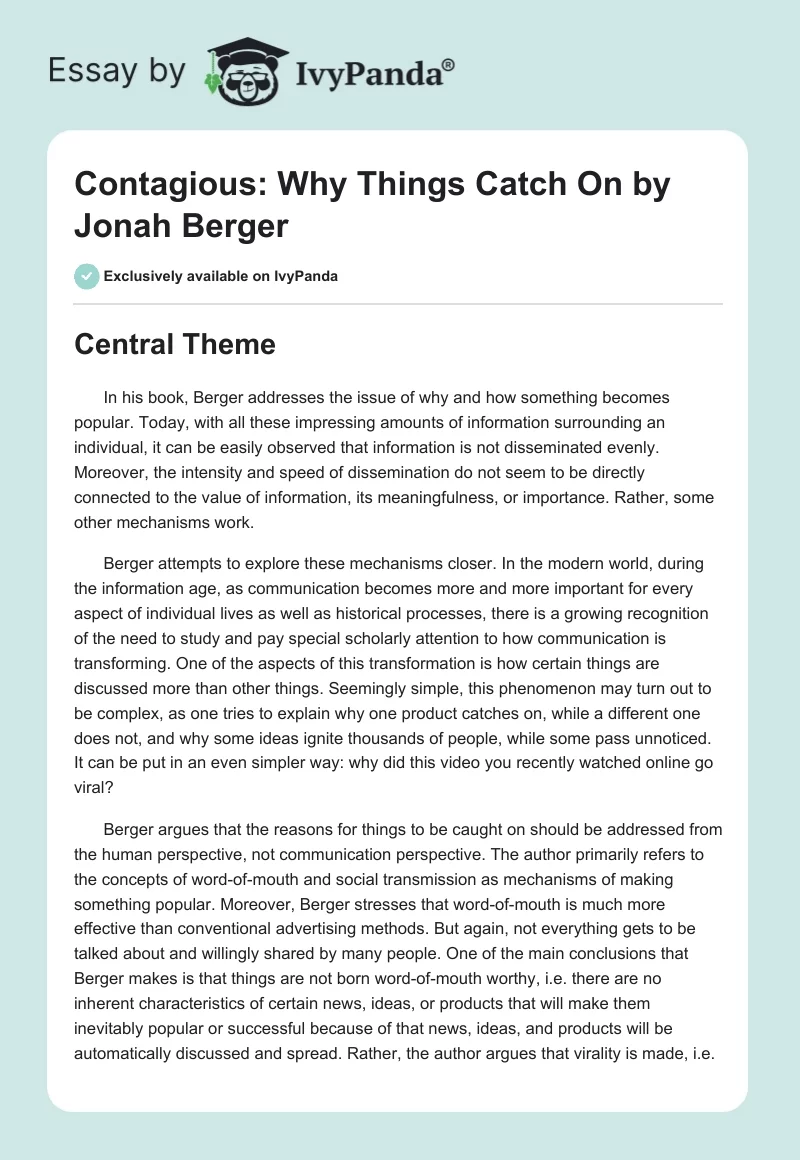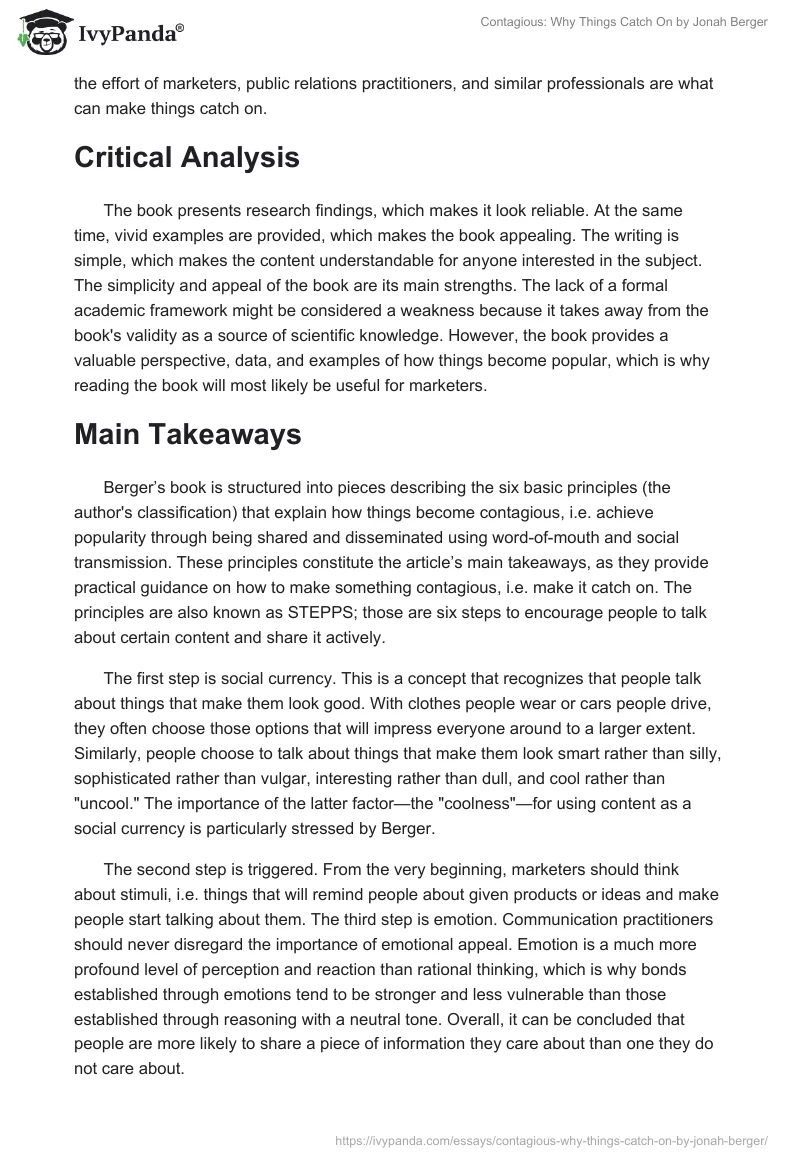Central Theme
In his book, Berger addresses the issue of why and how something becomes popular. Today, with all these impressing amounts of information surrounding an individual, it can be easily observed that information is not disseminated evenly. Moreover, the intensity and speed of dissemination do not seem to be directly connected to the value of information, its meaningfulness, or importance. Rather, some other mechanisms work.
Berger attempts to explore these mechanisms closer. In the modern world, during the information age, as communication becomes more and more important for every aspect of individual lives as well as historical processes, there is a growing recognition of the need to study and pay special scholarly attention to how communication is transforming. One of the aspects of this transformation is how certain things are discussed more than other things. Seemingly simple, this phenomenon may turn out to be complex, as one tries to explain why one product catches on, while a different one does not, and why some ideas ignite thousands of people, while some pass unnoticed. It can be put in an even simpler way: why did this video you recently watched online go viral?
Berger argues that the reasons for things to be caught on should be addressed from the human perspective, not communication perspective. The author primarily refers to the concepts of word-of-mouth and social transmission as mechanisms of making something popular. Moreover, Berger stresses that word-of-mouth is much more effective than conventional advertising methods. But again, not everything gets to be talked about and willingly shared by many people. One of the main conclusions that Berger makes is that things are not born word-of-mouth worthy, i.e. there are no inherent characteristics of certain news, ideas, or products that will make them inevitably popular or successful because of that news, ideas, and products will be automatically discussed and spread. Rather, the author argues that virality is made, i.e. the effort of marketers, public relations practitioners, and similar professionals are what can make things catch on.
Critical Analysis
The book presents research findings, which makes it look reliable. At the same time, vivid examples are provided, which makes the book appealing. The writing is simple, which makes the content understandable for anyone interested in the subject. The simplicity and appeal of the book are its main strengths. The lack of a formal academic framework might be considered a weakness because it takes away from the book’s validity as a source of scientific knowledge. However, the book provides a valuable perspective, data, and examples of how things become popular, which is why reading the book will most likely be useful for marketers.
Main Takeaways
Berger’s book is structured into pieces describing the six basic principles (the author’s classification) that explain how things become contagious, i.e. achieve popularity through being shared and disseminated using word-of-mouth and social transmission. These principles constitute the article’s main takeaways, as they provide practical guidance on how to make something contagious, i.e. make it catch on. The principles are also known as STEPPS; those are six steps to encourage people to talk about certain content and share it actively.
The first step is social currency. This is a concept that recognizes that people talk about things that make them look good. With clothes people wear or cars people drive, they often choose those options that will impress everyone around to a larger extent. Similarly, people choose to talk about things that make them look smart rather than silly, sophisticated rather than vulgar, interesting rather than dull, and cool rather than “uncool.” The importance of the latter factor—the “coolness”—for using content as a social currency is particularly stressed by Berger.
The second step is triggered. From the very beginning, marketers should think about stimuli, i.e. things that will remind people about given products or ideas and make people start talking about them. The third step is emotion. Communication practitioners should never disregard the importance of emotional appeal. Emotion is a much more profound level of perception and reaction than rational thinking, which is why bonds established through emotions tend to be stronger and less vulnerable than those established through reasoning with a neutral tone. Overall, it can be concluded that people are more likely to share a piece of information they care about than one they do not care about.
The fourth step is public. It refers to perceptions of what is acceptable, what is trending, and what is rewarded. When people see others do something, they become more likely to imitate those behaviors. Simply put, it means that people get to want something when they are shown how everyone else wants it. The fifth step is practical value. This principle declares that people like it better to share information (e.g. news and ideas) that is useful, i.e. capable of helping someone, than sharing something of no practical value.
Finally, the sixth principle is stories. It is easier to share some information when it is presented as a narrative, i.e. as a succession of events with a beginning, an end, and several developments in between. Following the six principles, according to Berger, is supposed to help make certain information contagious.


